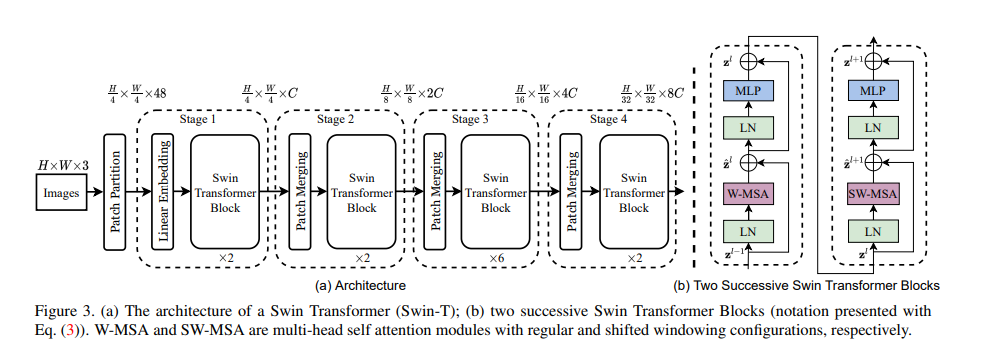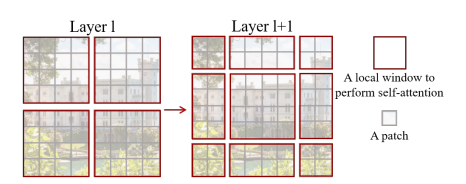type
status
date
slug
summary
tags
category
icon
password
A brief derivation of the computational complexity of Swin-transformer.
Overall Structure
The overall structure of Swin is illustrated below.

Patch merging
At stage Swin performs patch merging to downsample from to to produce a hierarchical representation.

The W-MSA module
Matrix multiplication:
could be implemented as follows:
Therefore its computational complexity is
For a global Multi-head Self Attention (MSA) module,

We can divide its computation into the following 4 steps and calculate their respective cc:
- for input , compute
In total,
Let thus for the local windows,
With sufficiently small , we consider the computational complexity of Swin-transformer linear with respect to the image size .
SW-MSA
To increase modeling power by introducing connections across windows, the authors proposed a shifted window partitioning approach by displacing the windows by pixels in the sucessive layer.

However, the number of windows is increased from to of varying sizes, hindering synchronous calculation. Therefore the proposed approach is to perform a cyclic shift and mask the correlated self-attention results in each window by to set the values near after passing through softmax.

Suppose , e.g. each local window covers patches, the four Attention Masks are visualized below:

Relative Position Bias
where parameter matrix is the rel.bias.
Define a 2D relative position index , it is clear that . We perform a simple linear transformation and use as the 1D relative position index. For each patch, we obtain a matrix of size . We flatten them individually and concatenate over patches, resulting in a matrix.
We train a vector table of length , which is the range of possible indices, to project the index values to index bias.
- Author:VernonWu
- URL:https://vernonwu.com/article/swin
- Copyright:All articles in this blog, except for special statements, adopt BY-NC-SA agreement. Please indicate the source!
Relate Posts